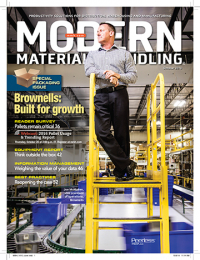Lift Truck Tips: Terms and conditions, applied
Leasing strategies require careful alignment of terms with precise operational data.
Latest Material Handling News
Overlooked no more: The importance of lift truck inspections Lithium transition: It’s all about the outcomes Safety for automatic guided vehicle (AGV) environments Assessing the move to lithium Leasing’s fleet management upside More Lift Truck TipsFleet managers are rigorous in their efforts to optimize productivity and manage operating costs, but a third leg of the stool can impair both objectives. Equipment acquisition strategies, whether leasing or purchasing, can sap resources throughout the lease term or economic life of the lift truck when not properly specified at the outset.
“A lack of alignment between financing strategies and operations is the most common issue I see,” says David Brown, national account manager for Toyota Material Handling USA. “They are usually under- or over-depreciating and not accounting for hours of use. It creates a lot of risk, and I see a lot of companies handcuff themselves by not accounting for true hour usage.”
Rough estimates like 2,000 hours per year or a seven-year depreciation schedule never truly align with actual utilization, but those old benchmarks are even farther from reality today. Forklift sales are up, Brown says, but so is usage. It’s common to see equipment used well more than 2,000 hours per year. If depreciated for seven years, the equipment needs to run 21,000 hours. By that time, Brown says, you can expect a significant increase in operating costs, especially beyond 12,000 hours.
A closed-ended lease means the leasing company bears the residual risk—the difference between anticipated and actual usage—at the end of the term, so they have factored hours into the price. When customers see a high monthly payment for a lease and low depreciation, they might tend toward a purchase decision, Brown says. An open-ended lease like the kind offered by leasing companies that are relatively new to the materials handling space, means the customer could be bearing the residual risk.
“They offer a low interest rate, but you have to question why you’re taking that risk for the sake of a low payment,” Brown says. “Look at the fine print of who is carrying the residual risk on the back end, since you could be liable for thousands of dollars. People get hung up on terms, but terms are irrelevant. It’s about annual hours.”
Fleet managers who find themselves midstream on a poorly configured lease can take steps to minimize the damage, but their options to renegotiate could be limited. They might work with the leasing company to account for anticipated overtime hours, or try to shorten the term.
“A fleet manager can try to balance utilization of equipment and take the truck to term, but not without some bumps and bruises,” Brown says. “The lesson is that fleet managers cannot be solely focused on invoices and work orders. They need to be looking at and managing leases.”
The industry’s adoption of telematics is impacting financing as well, Brown adds. Between 2008 and 2010, the concept of “power by the hour” enjoyed brief fame as equipment leased for 3,000 hours of annual usage came in below 2,000 and customers sought to avoid overpaying.
“Today, customers are generally overusing equipment,” Brown says. “With telematics, we might soon see a hybrid where equipment is rotated based on hourly intervals. Lease companies will need to be creative to ensure rotation at 12,000 hours whether it takes a customer two years or five to get there.”
The only way to manage such a “hybrid” agreement is a lease structure with flexible payments, Brown says, perhaps with a flat monthly rate plus an hour-based charge. “The bigger challenge is that it takes management on the customer side and the service provider side,” he says. “Dynamic and flexible, that’s the direction our industry is going.”

Article Topics
Lift Truck Tips News & Resources
Overlooked no more: The importance of lift truck inspections Lithium transition: It’s all about the outcomes Safety for automatic guided vehicle (AGV) environments Assessing the move to lithium Leasing’s fleet management upside Managing for lift truck operator safety Narrow aisle success: Think systems, then trucks More Lift Truck TipsLatest in Materials Handling
The (Not So) Secret Weapons: How Key Cabinets and Asset Management Lockers Are Changing Supply Chain Operations MODEX C-Suite Interview with Harold Vanasse: The perfect blend of automation and sustainability Consultant and industry leader John M. Hill passes on at age 86 Registration open for Pack Expo International 2024 Walmart chooses Swisslog AS/RS and software for third milk processing facility NetLogistik partners with Vuzix subsidiary Moviynt to offer mobility solutions for warehouses Materials Handling Robotics: The new world of heterogeneous robotic integration More Materials HandlingAbout the Author
Subscribe to Materials Handling Magazine

Find out what the world's most innovative companies are doing to improve productivity in their plants and distribution centers.
Start your FREE subscription today.
April 2024 Modern Materials Handling

Latest Resources











